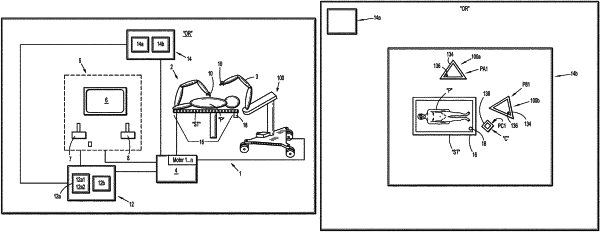| CPC A61B 34/32 (2016.02) [A61B 34/20 (2016.02); A61B 34/35 (2016.02); A61B 50/13 (2016.02); A61B 90/36 (2016.02); B25J 5/007 (2013.01); B25J 9/162 (2013.01); A61B 2034/2055 (2016.02); A61B 2034/2063 (2016.02); A61B 2090/365 (2016.02); A61B 2090/3937 (2016.02)] | 18 Claims |

|
1. A method of placing a surgical robotic cart assembly, comprising:
determining a first position of a first surgical robotic cart assembly relative to a surgical table;
determining a first position of a second surgical robotic cart assembly relative to the first surgical robotic cart assembly and the surgical table;
retrieving an environmental map including a static map portion including boundaries of an operating room and at least one landmark and a dynamic map portion including positions of the first and second surgical robotic carts;
updating the dynamic map portion to incorporate the first position of the first surgical robotic cart assembly and the first position of the second surgical robotic cart assembly;
calculating a path for the first surgical robotic cart assembly towards a second position of the first surgical robotic cart assembly relative to the surgical table, wherein in the second position, the first surgical robotic cart assembly is spaced-apart a first safe distance from the surgical table;
calculating a path for the second surgical robotic cart assembly towards a second position of the second surgical robotic cart assembly relative to the first surgical robotic cart assembly and the surgical table, wherein in the second position, the second surgical robotic cart assembly is spaced-apart a second safe distance from the first surgical robotic cart assembly and a third safe distance from the surgical table;
moving the first surgical robotic cart assembly autonomously towards the second position thereof;
moving the second surgical robotic cart assembly autonomously towards the second position thereof;
updating the dynamic map portion during movement of the first surgical robotic cart assembly and the second surgical robotic cart assembly;
predicting a potential collision along the path of the first surgical robotic cart assembly as the first surgical robotic cart assembly moves towards the second position thereof; and
predicting a potential collision along the path of the second surgical robotic cart assembly as the second surgical robotic cart assembly moves towards the second position thereof.
|
|
11. A method of positioning a plurality of surgical robotic cart assemblies within an operating room, comprising:
obtaining a first sensor data from an operating room sensor;
determining a first position of a first surgical robotic cart assembly and determining a first position of a second surgical robotic cart assembly, the first surgical robotic cart assembly including a first base portion having a first sensor and a first transmitter, and the second surgical robotic cart assembly including a second base portion having a second sensor and a second transmitter;
calculating a first path for the first surgical robotic cart assembly towards a second position of the first surgical robotic cart assembly and calculating a second path for the second surgical robotic cart assembly towards a second position of the second surgical robotic cart assembly;
moving the first surgical robotic cart assembly and the second surgical robotic cart assembly autonomously towards the second positions, respectively, thereof;
predicting a potential collision along the first path and the second path as the first surgical robotic cart assembly moves towards the second position thereof and as the second surgical robotic cart assembly moves towards the second position thereof; and
updating an environmental map with the second position of the first surgical robotic cart assembly and with the second position of the second surgical robotic cart assembly upon moving the first and second surgical robotic cart assemblies to the second positions, respectively, thereof.
|